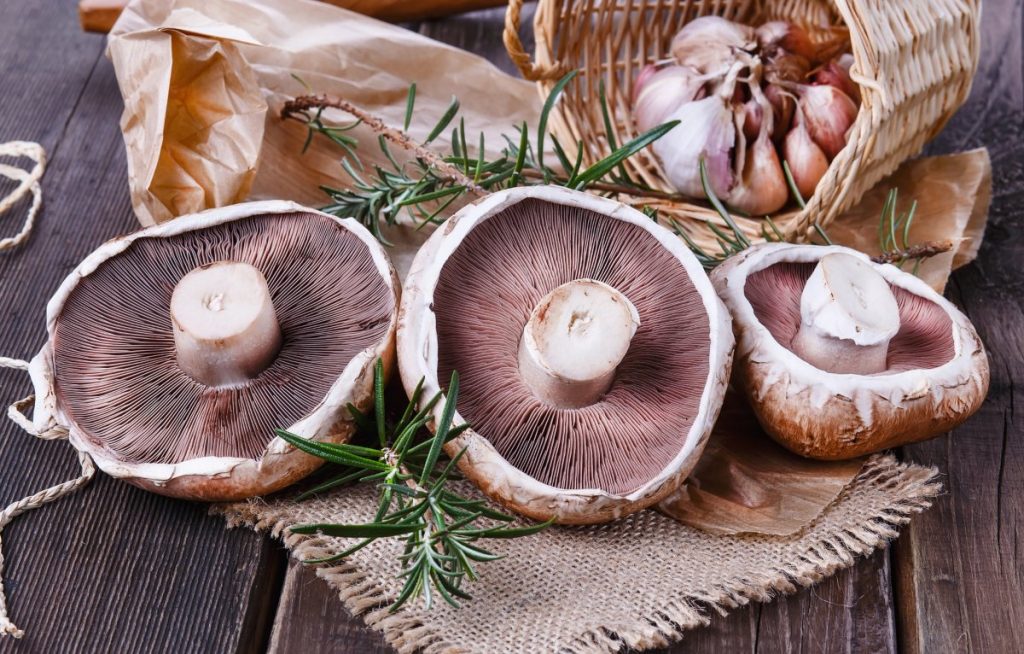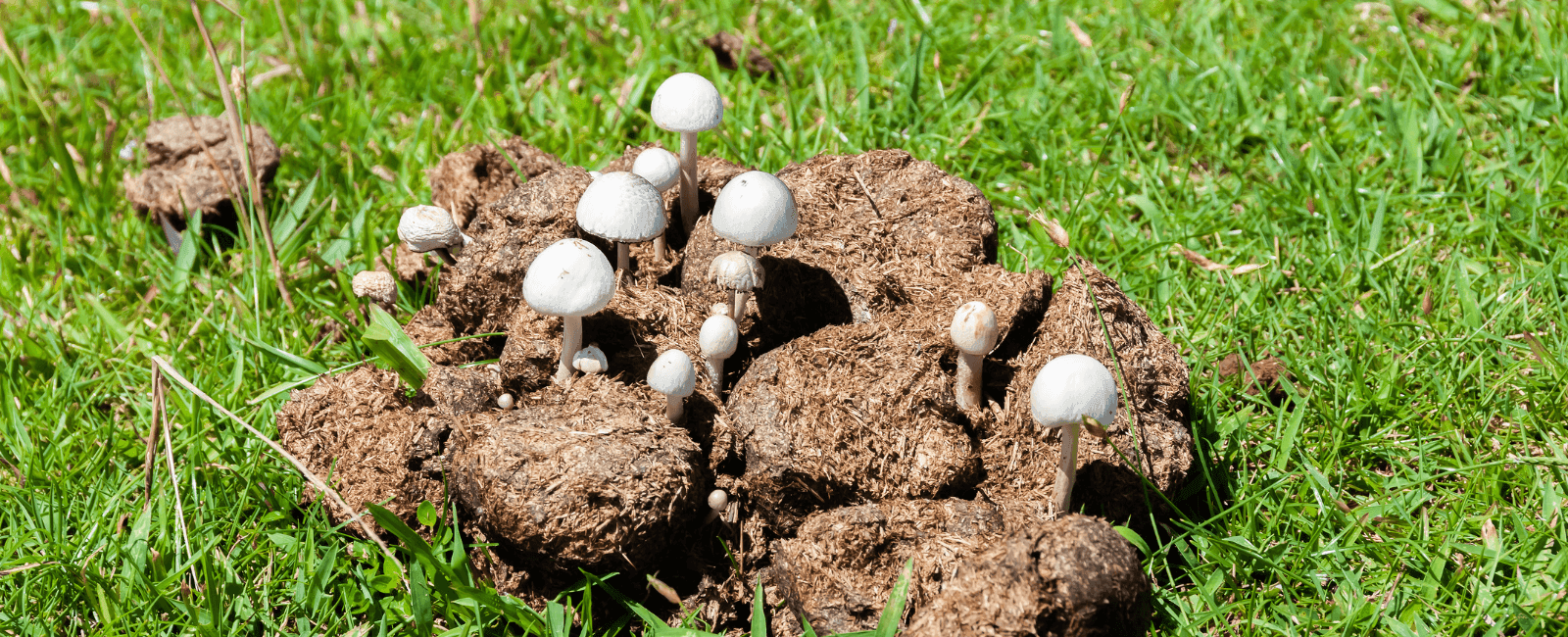Mushrooms are unique in that they’re the only fungi that people regularly consume. They’re known for their delicious culinary applications and range of medicinal uses.
But many people don’t know much about them or where they come from, even though they’re becoming more popular and more kinds are being sold in stores.
This article will tell you where mushrooms come from and answer some of the most common questions people have about their history.
That iconic image of a mushroom popping up from a pile of poop is actually not far off from reality. Certain types of mushrooms do naturally grow from the manure and feces of animals. However, the relationship is more complex than you might think. Let’s dig into the details on mushrooms and poop.
Do Psychedelic Mushrooms Grow in Poop?
Perhaps the best known mushroom-in-poop is the psychedelic variety Psilocybe cubensis This “magic mushroom” is found growing in cow dung, particularly in humid, tropical areas The spores pass through the cow’s digestive system unharmed, allowing them to germinate in the nutrient-rich manure.
However, P. cubensis does not grow exclusively on poop. It can also fruit from other organic matter like straw, compost, rotting wood, and sugarcane mulch. The key factors are warm climate and high moisture. Poop just happens to provide ideal conditions.
So while it’s true psychedelic shrooms can grow on cow pies, they don’t have to. P. cubensis and other mushrooms will colonize any decaying organic material that offers nutrition and moisture.
Why Do Mushrooms Grow on Poop?
Mushrooms don’t actually eat poop. They don’t consume nutrients from manure the way plants would. Instead, mushrooms break down and digest complex organic matter through excreting digestive enzymes.
Their food source is the bacteria, microbes, and other organic material colonizing the poop. Mushrooms derive nutrition by absorbing the byproducts left behind as this mini ecosystem decomposes the manure.
Poop offers the perfect habitat thanks to its:
- Abundant organic matter to decompose
- Nutrients like nitrogen, phosphorus, and potassium
- Constant moisture content
- Lack of light for ideal fruiting
- Gentle, insulating warmth
For mushroom spores drifting through the air, landing on a fresh pile of dung offers a prime opportunity to germinate and grow.
What Other Mushrooms Grow in Poop?
Dung-loving or “coprophilous” mushrooms span several genera beyond just Psilocybe. Here are some other notable fungi found fruiting in animal feces:
- Panaeolus – Psychoactive species containing psilocybin. They grow in cow and horse manure.
- Coprinopsis – The “inky cap” mushrooms that deliquesce into black goo. Some occur in herbivore dung.
- Plicaturopsis – Fungi with caps that split into star-like shapes. They grow on moose and horse manure.
- Conocybe, Galerina, Pholiotina – Small, brown saprobic mushrooms found on dung. Occasionally psychoactive.
- Bolbitius – Primarily coprophilous mushrooms similar to the lawn mushroom Conocybe apala.
Overall, around 10-20% of mushrooms species have been found growing on poop at some point. But most fungal species are not exclusive to manure and can grow on any decaying matter with the right conditions.
Why Don’t Mushrooms Grow in Human Poop?
You likely won’t find mushrooms popping up from piles of human feces. Our digestive systems are radically different than cows and horses.
The main factors that prevent mushrooms from growing in human excrement are:
-
Acidity – Our stomach acid kills most spores passing through. This prevents germination.
-
Composition – Human poop contains less undigested plant material and more bacteria. Less nutrition for mushrooms.
-
Environment – We tend to manage human waste in controlled environments like sewers and septic systems. This prevents spores from reaching it.
-
Temperature – Mushrooms require warmer temperatures to fruit. Human waste is not heat-insulating like a fresh pile of cow manure.
So while it’s not impossible to find mushrooms growing from human feces, it’s far less common than animal dung. The conditions have to be just right.
Mushroom Farming Doesn’t Use Poop
You won’t find mushrooms growing in poop on commercial mushroom farms. Instead, meticulously formulated substrates and composts provide the ideal fruiting medium.
On farms, mushrooms grow in substrate – a mixture of:
- Plant materials like straw, hulls, hay, and sawdust
- Nutrient sources such as gypsum, bran, and cornmeal
- Peat or coco coir for moisture retention
- pH buffers like limestone
- Supplemental nitrogen
This substrate is carefully composted and pasteurized before use. Then it is inoculated with mushroom spawn and monitored to encourage ideal fruiting conditions.
While manure can be used in small amounts in substrate mixes, it is not a primary ingredient. The standardized process avoids the risks and variability of using straight poop.
The Takeaway on Mushrooms and Poop
It is undeniably fascinating that mushrooms can sprout straight from poop. But while picturesque, this phenomenon has caveats.
Only certain mushroom species grow on dung, and even then, they don’t grow exclusively on manure. Poop just happens to provide ideal moisture, nutrients, and spore germination conditions.
So next time you see an iconic mushroom on poop image, know that this symbiosis is more nuanced than it appears. The fungi are actually feasting on the bacteria decomposing the poop, not the manure itself!
Where do Portobello Mushrooms Come From?
For most of us, portobello mushrooms come from our local grocery store. But, portobello mushrooms (Agaricus bisporus) also grow naturally in the wild.
You can find them in grasslands and meadows throughout Europe and North America.
Also known as champignon, button, white, brown or cremini mushrooms, Agaricus bisporus are the most cultivated mushrooms worldwide.
The first record of western cultures cultivating mushrooms was in France in around 1650. The first mushrooms they grew were Agricarus bisporus.
For 160 years, they grew button, cremini and portobello mushrooms in open fields using compost. Then they moved underground and began growing mushrooms in caves, quarries and excavated tunnels.
England was next to grow Agricarus bisporus, and in 1965 mushroom cultivation began in the United States.
Today button and portobello mushrooms are some of the most widely consumed mushrooms in the world. They make up more than 40% of global mushroom production.

Where do Mushrooms Come From?
The fruiting body, or fruit, of a much bigger fungus that is usually hidden underground or in dead wood. This is what a mushroom is.
Mycelium grows by absorbing nutrients from dead and decaying organic matter. It’s an important part of the ecosystem because it releases enzymes that help break down dead plants;
It also provides an underground network that links fungi and allows trees to communicate with each other.
Mycelium is a remarkable organism whose goal is to reproduce and keep the species going. It can remain dormant and hidden for several years until conditions are right for reproduction.
Then it produces a fruiting body, which we call a mushroom, to produce and distribute spores.
If you want to learn more about where mushrooms come from, read our article called “A Detailed Explanation of the Mushroom Life Cycle.”

Magic Mushrooms in The Wild Identification.
FAQ
Are mushrooms grown in manure?
What do mushrooms grow in?
What are the mushrooms growing near dog poop?
Why do mushrooms suddenly appear?
- The Ultimate Guide to Growing Strawberries in Raised Beds - August 8, 2025
- No-Dig Garden Beds: The Easiest Way to Grow a Beautiful Garden - August 6, 2025
- How to Protect and Preserve Wood for Raised Garden Beds - August 6, 2025

